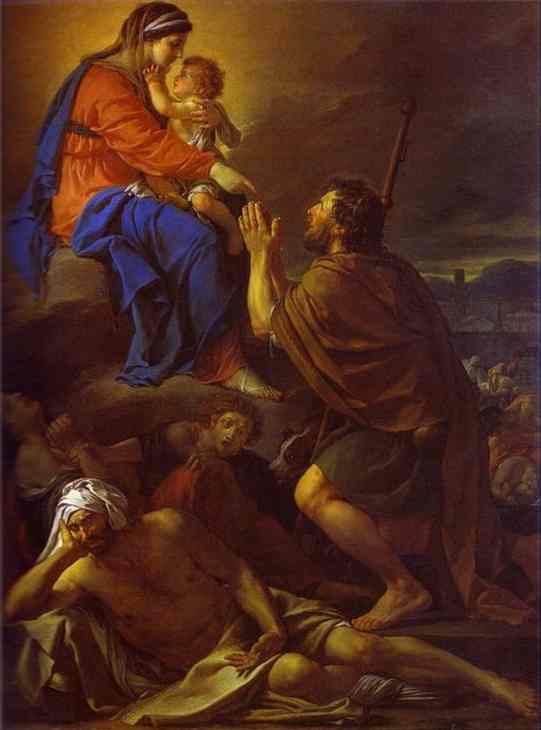Facts About Saint Roch Interceding with the Virgin for the Plague-Stricken
"Saint Roch Interceding with the Virgin for the Plague-Stricken" is a compelling religious painting by French artist Jacques-Louis David. Completed in 1780 during his residency at the Villa Medici in Rome, this piece vividly narrates the story of Saint Roch, the patron saint of the sick and plague-afflicted.
In the painting, Saint Roch is depicted in his pilgrim attire, with a conspicuous bubo on his thigh—a hallmark of the plague. By his side is a faithful dog, and he is fervently beseeching the Virgin Mary and the Christ Child for mercy on behalf of the plague sufferers encircling him.
David positions Saint Roch on the middle right of the canvas, gazing upward with hope towards the Virgin Mary and Christ Child, who are placed at the upper left. The plague victims, rendered in somber tones, occupy the lower left. Their agony is palpable: some lie prostrate on the ground, while others are being carted away. Critics have observed a stark contrast between David's portrayal of these victims and the more hopeful depictions found in works by Rubens. In David's painting, the victims seem resigned to their dire fate.
This oil-on-canvas masterpiece measures 260 by 195 cm and is currently housed at the Musée des Beaux-Arts de Marseille in France. David's sojourn in Rome was a period of immense artistic growth, influenced by masters like Caravaggio and Poussin. Although he initially resisted the Italian Baroque style, the numerous sketches he created during his stay would later inform his work.
The painting has prompted comparisons to Rubens’s art, particularly in the portrayal of the victims and the perceived emotional disconnect between Saint Roch and the Virgin Mary in David’s rendition. Despite these critiques, David's painting remains a powerful depiction of faith and intercession during a time of profound suffering.

 Italy
Italy